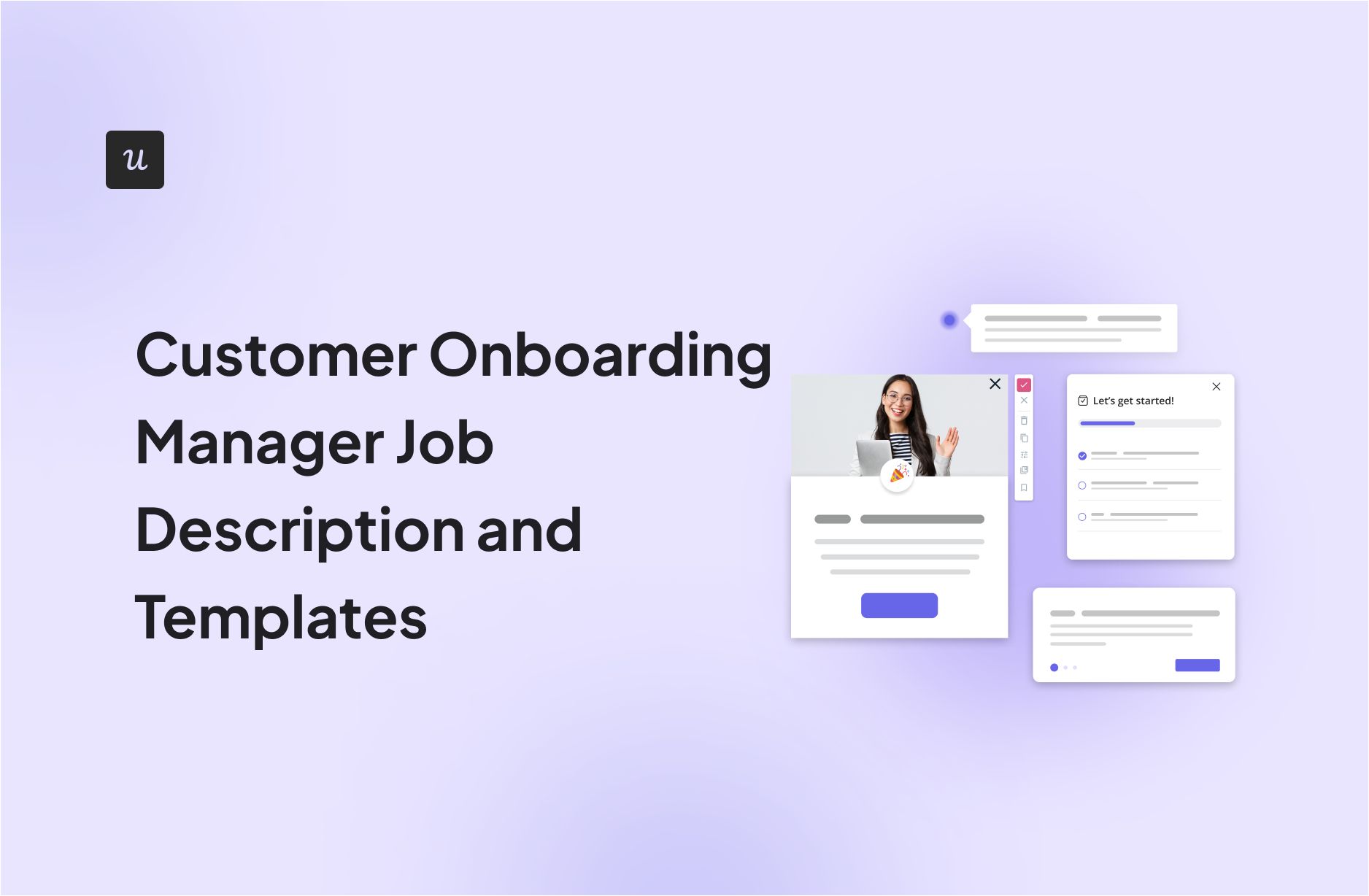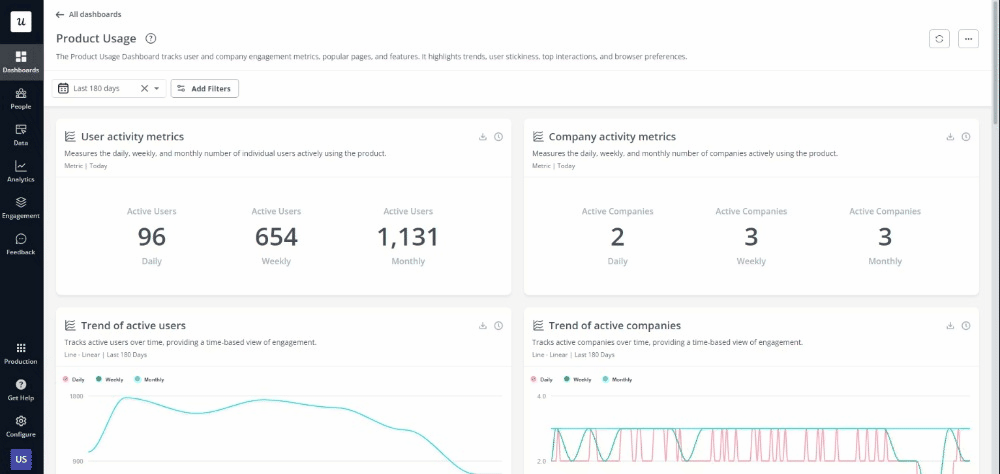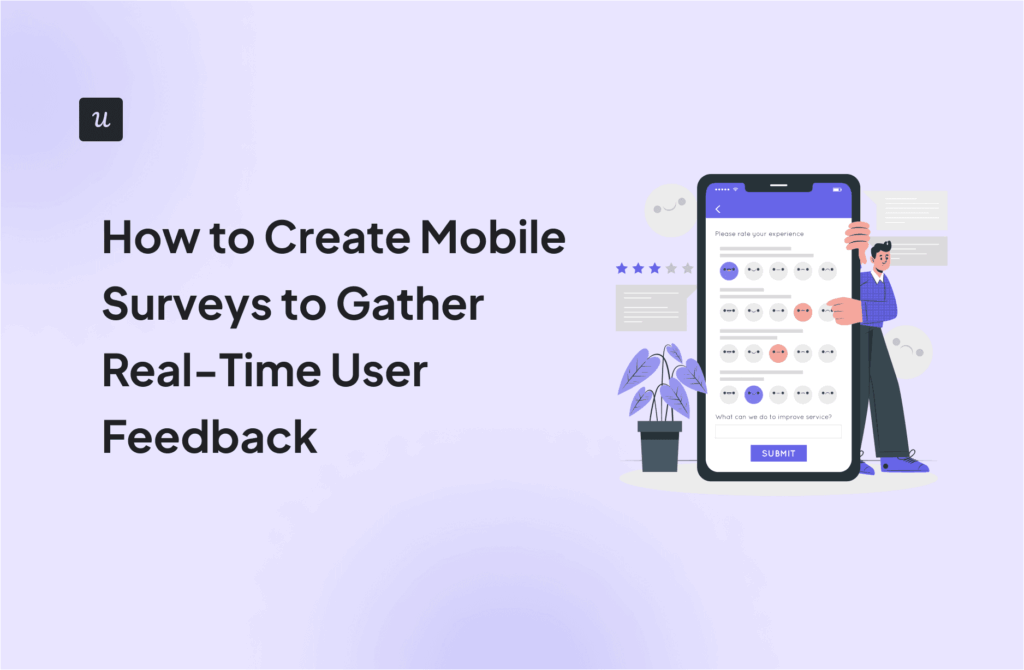
Interested in customer onboarding manager roles? You’re in the right place!
In this guide, we’ll explore the ins and outs of customer onboarding manager roles through detailed job descriptions and handy templates.
Whether you’re hiring, job hunting, or simply curious, we’ve got you covered with practical insights and ready-to-use resources.
Let’s dive in!
Try Userpilot Now
See Why 1,000+ Teams Choose Userpilot

TL;DR
- A customer onboarding manager is the person behind developing and implementing onboarding strategies to help SaaS customers move seamlessly from sign-up to effective product use.
- A customer onboarding manager job description outlines the essential duties, required skills, and qualifications necessary to oversee and optimize the onboarding process.
- For instance, a customer onboarding manager at a CRM platform SaaS company might require a deep understanding of sales and marketing processes, while one at an analytics software SaaS company might need strong data analysis and visualization skills.
- Looking into tools for customer onboarding managers? Userpilot is an all-in-one product platform with engagement features and powerful analytics capabilities. Book a demo to see it in action!
What is a customer onboarding manager?
A customer onboarding manager is the person behind developing and implementing onboarding strategies to help SaaS customers move seamlessly from sign-up to effective product use.
In the SaaS industry, this role involves understanding customer needs, providing tailored training, and offering ongoing support to maximize product utilization and satisfaction.
Key tasks include configuring the software, conducting training sessions, monitoring user engagement, and addressing any issues that arise during the onboarding phase. Their ultimate goal is to enhance customer satisfaction and drive long-term product usage.
Customer onboarding manager’s main responsibilities
Here are the main responsibilities and duties of a Customer Onboarding Manager, particularly in a SaaS (Software as a Service) environment:
Crafting the Onboarding Journey:
- Designing and Implementing the Program: This involves developing a comprehensive onboarding process that guides new customers from signup to product mastery. It might include elements like account setup workflows, personalized training modules, and interactive tutorials.
- Content Creation: They might create or curate onboarding content like knowledge base articles, video tutorials, and email drip campaigns to educate customers on product features and best practices.
- Streamlining Account Setup: They ensure a smooth and efficient account setup process, minimizing friction for new users.
Guiding and Supporting New Customers:
- User Training and Education: Customer onboarding managers deliver user training sessions, workshops, or one-on-one coaching to help customers understand the product’s functionalities and value proposition.
- Communication Champion: They maintain clear communication with new customers throughout the onboarding process, addressing questions promptly and fostering a sense of engagement. This might involve using various communication channels like email, phone calls, or live chat.
- Troubleshooting and Support: They provide initial troubleshooting support to new customers, resolving any technical issues or roadblocks they encounter during the onboarding phase.
Optimizing for Success:
- Metrics and Analytics: Customer onboarding managers track key onboarding metrics such as completion rates, time-to-value, and customer satisfaction. They analyze this data to identify areas for improvement and optimize the onboarding process for better user adoption and retention.
- Continuous Improvement: Based on data and customer feedback, they refine the onboarding program to ensure it remains effective and scalable as the product evolves.
Collaboration and Teamwork:
- Bridge Between Teams: They work closely with various teams within the organization, including sales, marketing, and customer success, to ensure a seamless handoff from initial acquisition to ongoing customer support.
- Alignment with Sales and Marketing: They collaborate with sales and marketing teams to ensure the onboarding experience aligns with the messaging and promises made during the pre-sales process.
- Providing Feedback: They provide valuable feedback to product development teams about user needs and challenges identified during the onboarding process.
In essence, customer onboarding managers are the orchestra conductors of the onboarding experience. They ensure all the elements work together to create a smooth and successful transition for new customers, ultimately driving product adoption and retention.
Customer onboarding manager job description and template
Here is an example of a job template regarding the customer onboarding manager position:
Customer Onboarding Manager Job Description Template:
Do you thrive on creating exceptional customer experiences? Are you passionate about helping users unlock the full potential of a product? If so, then we want you on our team!
Company Name:
[Briefly describe your company, its mission, and its target market.]
The Role:
We are searching for a passionate and customer-centric Customer Onboarding Manager to join our growing team! You will play a pivotal role in shaping the first impression new customers have of our product, ensuring a smooth transition from sign-up to successful product use. As the architect of our onboarding experience, you’ll be instrumental in driving customer success and product adoption from day one.
Responsibilities:
- Develop and manage a world-class onboarding experience: Design and implement a comprehensive onboarding program that educates new customers on product features, maximizes product adoption, and drives customer success.
- Own the onboarding journey: Oversee the entire onboarding process, including account setup, user training, and knowledge base creation.
- Become a product expert: Develop a deep understanding of the product’s functionalities and value proposition to effectively guide new customers.
- Communication maestro: Maintain clear and consistent communication with new customers, addressing questions promptly and fostering a sense of engagement.
- Data-driven optimization: Track key onboarding metrics, analyze user behavior, and identify areas for improvement to continuously optimize the onboarding process.
- Collaborate effectively: Work closely with the sales, marketing, and customer success teams to ensure a seamless handoff from sales to ongoing customer support.
Qualifications:
- Minimum [X] years of experience in customer onboarding, customer success, or a related field.
- Proven track record of designing and implementing successful onboarding programs.
- In-depth understanding of SaaS products and best practices.
- Excellent communication, presentation, and interpersonal skills.
- Strong analytical skills and ability to interpret data.
- Ability to manage multiple priorities and work independently.
Bonus Points:
- Experience working in a fast-paced SaaS environment.
- Experience with user onboarding tools or platforms.
- Passion for customer experience and success.
What We Offer:
- Competitive salary and benefits package.
- Opportunity to work in a dynamic and growing company.
- Chance to make a real impact on customer success.
- Collaborative and supportive work environment.
To Apply:
Please submit your resume and cover letter to [email protected].
Best practices to be a great customer onboarding manager
Customer onboarding managers play a pivotal role in shaping a user’s first impression and setting them on the path to success.
By implementing effective onboarding strategies, you can ensure new customers not only understand your product’s value proposition but also become active and engaged users.
Here are five key best practices to help you become a great customer onboarding manager:
- Craft a Seamless Onboarding Journey: Design a clear and comprehensive onboarding program tailored to your specific customer segments. This might include interactive tutorials, personalized welcome emails, and tiered training modules that progressively educate users on product features and best practices.
- Embrace the Power of Content: Develop engaging onboarding content in multiple formats (videos, written guides, interactive walkthroughs). Cater content to different learning styles and make it easily accessible within the product or a dedicated knowledge base.
- Become a Data-Driven Optimizer: Track key onboarding metrics like completion rates, time-to-value, and customer satisfaction. Analyze this data to identify areas for improvement and continuously refine your onboarding program for maximum impact.
- Communication is Key: Maintain clear and consistent communication with new customers throughout the onboarding process. Utilize various channels (email, live chat, phone calls) to answer questions promptly and address any concerns they might have.
- Foster a Collaborative Spirit: Onboarding success often hinges on collaboration across various teams (sales, marketing, customer success). Foster open communication channels and work together to ensure a smooth customer journey from pre-sales all the way to ongoing support.
By embracing these best practices and focusing on continuous improvement, you can create a world-class customer onboarding experience that drives product adoption, increases customer retention, and ultimately fuels your company’s growth.
Remember, a well-designed onboarding program is an investment in your customers’ success, and their success is your success.
Customer onboarding manager FAQs
What are the key metrics for measuring successful customer onboarding?
Success in onboarding goes beyond vanity metrics. Track metrics that reflect user activation, engagement, and value realization. Here are some key ones:
- Time-to-value (TTv): How quickly do customers achieve their first win with your product?
- Feature adoption: Are users exploring and utilizing core functionalities?
- Customer churn rate: How many customers are canceling after onboarding?
- Net Promoter Score (NPS): How likely are customers to recommend your product after onboarding?
- Customer Satisfaction (CSAT): Are customers happy with their onboarding experience?
How can I personalize the onboarding experience for different customer segments?
Personalization fosters a more engaging experience. Consider segmenting users based on factors like company size, industry, or signup plan. Here’s how:
- Tailor content: Provide targeted onboarding materials (e.g., guides, tutorials) relevant to specific user needs and goals.
- Highlight relevant features: Showcase functionalities that directly address each segment’s pain points.
- Utilize user data: Leverage onboarding behavior to personalize in-app messages and recommendations.
What are the best practices for creating effective onboarding content?
Effective onboarding content is clear, concise, and action-oriented. Here are some best practices:
- Keep it focused: Prioritize essential information and avoid overwhelming users.
- Use visuals: Screenshots, explainer videos, and infographics enhance understanding.
- Offer multiple formats: Cater to different learning styles with text guides, video tutorials, and interactive elements.
- Maintain a clear tone: Use a conversational yet professional tone that aligns with your brand voice.
How can I automate tasks to streamline the onboarding process?
Automation frees you to focus on strategic initiatives. Here are areas for automation:
- Welcome emails: Set up automated email sequences to deliver key information at pre-defined intervals.
- In-app walkthroughs: Create automated tooltips and product tours that guide users through core functionalities.
- Task management: Utilize project management tools to automate task assignments and track onboarding progress for different users.
How can I measure the ROI (return on investment) of my customer onboarding program?
Onboarding directly impacts customer acquisition and retention. Here’s how to measure ROI:
- Calculate customer lifetime value (CLTV): This metric estimates the total revenue a customer generates over their relationship with your company. Increased onboarding effectiveness typically leads to higher CLTV.
- Track customer acquisition costs (CAC): Effective onboarding reduces churn and the need for reacquisition efforts, lowering CAC.
- Analyze onboarding program costs: Compare the costs of your onboarding program with the revenue gains from improved customer acquisition and retention.
Conclusion
We hope this guide has provided you with valuable insights into the roles and responsibilities of customer onboarding managers.
By understanding the key responsibilities and skills required, you can make informed decisions and take meaningful steps in your career or recruitment journey.
Looking into tools for customer onboarding managers? Userpilot is an all-in-one product platform with engagement features and powerful analytics capabilities. Book a demo to see it in action!








